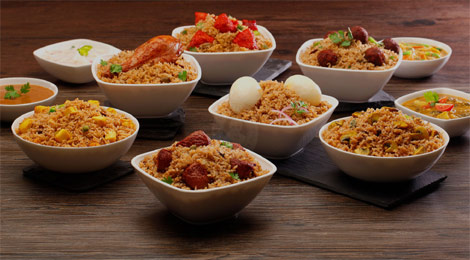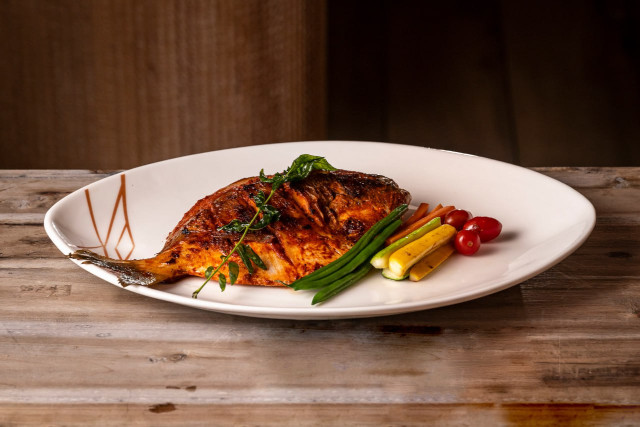No. of views : (8832)
Did you know about these type of Biryani in India?
Posted on: 24/Dec/2018 5:25:10 PM

Biryani is one of the foods that has almost no haters all around India barring a few rare. It is originated from ancient Persian culture passed on to Indian Mughal era and then spread all over Indian sub-continent. The mixed form of meat, rice and Indian Spices makes it more special and delicious kind making it a household name for occasions and holidays.
The kind of preparation varies along with the changing geographical conditions of India from north to south and east to west. In many cultures Biryani became an integral part of festive cuisine for celebrations and parties. Onion Raita, Brinjal curry, Mutton gravy and Chicken gravy are some of the best side dishes for any type of Biryani.
Lets take a look at different kinds of Biryani comprising of different taste and flavors.
Hyderabad Dum-Biryani (Andhra Pradesh)
Hyderabad Biryani is the spiciest forms of all the kinds in India. The South Indian preparation oriented with Mughal style mainly using saffron and coconut adding special flavors. The gravy is dominated in Hyderabad Biryani which should be mixed by the eaters adding taste to the saffron flavored Basmati rice.
Dindigul Biryani (Tamil Nadu)
There are many outlets serving Dindigul Biryani as their main selling course. Jeera Samba rice is used for the preparation of Dindigul Biryani making it stand out from other forms of Biryani preparation all through the country. Cube sized mutton pieces are used for preparing the Biryani along with specially prepared masala and pepper mixes.
Ambur Biryani (Tamil Nadu)
There are many Biryani outlets in Chennai- Bengaluru Highways named as Ambur Biryani owing to the name of the locality. Different flavors associated with the type of meat such as mutton, beef, chicken, kadai, fish and prawn are served in this kind. The locality has a unique kind of preparation with aromatic masala flavor cooked with basmati rice. The taste and the kind is very common all over North Tamil Nadu.
Bhatkali Biryani (Karnataka)
The kind of Biryani is low in spice but rich in local flavor of coastal Karnataka. The style was originated form Nawayuth Muslim community of Bhatkal, Karnataka. Green Chillies and onions are largely used in this kind of Biryani where mutton is used in a curd-soaked form making it more soft and unique.
Lucknow Biryani (Uttar Pradesh)
Lucknow Biryani is the original form of the food preparation that was actually transferred from Persia. The dum (closed cooking) style is used for this biryani preparation easy to digest as it is low in spices and added flavors.
Kolkata Biryani (West Bengal)
The root of preparation of Kolkata Biryani originated from Nawabi style of Lucknow. Basmati rice combines with sliced mutton and ghee makes it tasty with every pinch of original Mughal flavor. Adding potatoes and boiled eggs differentiate it from other kinds of Biryani preparation.
Malabar Biryani (Kerala)
This is a very famous briyani type in areas of Kerala including Thalassery and Malappuram. This has the uniqueness of Khyma rice, a variety of rice in Kerala. T The briyani has very enhanced flavors of spices and we can observe excessive use of cashew nuts and raisins. Kerala chefs use to add lavish amount of these rich ingredients while making the briyani. The method of preparation makes the main difference here. The rice in the briyani is cooked separately and the gravy for the briyani is separately cooked too. At last, while serving, the rice and masala are mixed together.
Sindhi Briyani in Pakistan
This originates from Sind of Pakistan. It is a spicy and zesty briyani type. This has sour curd and a lot of spices getting used along with chillies. This is also unique in terms of including Kewra or Mitha. This briyani also uses potatoes and also prunes in its making.
Bombay Briyani from Maharashtra
Here, the use of potatoes make the dish very unique. Potato is a compulsory ingredient, be it vegetarian or non-vegetarian briyani. This preparation follows layered cooking. Usually, basmati rice is half cooked and it is put in dum along with the meat.







